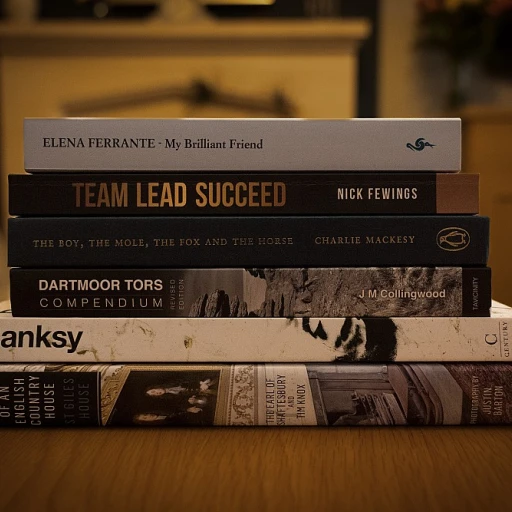
Understanding the Role of a Technical Writer
Exploring the Technical Writing Role
Understanding the role of a technical writer is crucial when crafting a resume tailored for this profession. A technical writer's primary responsibility is to create user-friendly documentation that explains complex technical information. This can include writing content such as user manuals, software guides, and API documentation. Highlighting your experience in creating these documents can set you apart from other candidates. Technical writers must have a strong command of language and superior communication skills to convey information clearly to users. Your resume should demonstrate not only your technical writing abilities, but also your capacity to work with subject matter experts, use specialized software like MadCap Flare, and adapt content for various systems and user levels. Collaboration is a significant part of a technical writer's job, as writers often need to work with developers and other professionals to gather the necessary information. Showcasing your proficiency in technical communication and teamwork is essential. This is particularly true for senior technical roles, where experience in leading documentation projects can be a decisive factor. For those making a career transition to technical writing, it is vital to showcase technical skills alongside proven writing ability. For those looking for further guidance, explore our effective business development resume strategies to see how skills can transfer between fields.Key Elements of a Technical Writer Resume
Essential Components for a Winning Resume
When crafting a technical writer resume, it's crucial to include key sections that highlight your skills, experience, and ability to produce high-quality documentation. Employers look for resumes that are clear, concise, and effectively showcase an applicant’s ability to create user manuals, software guides, and other technical content. Here are some important elements to include:
- Contact Information: Ensure your contact details are prominently displayed, including a professional email and a link to your LinkedIn profile, if applicable.
- Summary Statement: This opening section briefly identifies your proficiency in technical writing. A well-structured summary can set the tone for the rest of the resume by summarizing your key qualifications and achievements.
- Skills: List relevant skills specific to technical communication and documentation. Include software and tools like MadCap Flare or expertise in API documentation. Ensure these align with the job description of the position you're targeting.
- Professional Experience: Highlight roles that involved technical writing or relevant communication tasks. Discuss your time spent creating technical documentation or user manuals. Emphasize any experience adapting complex information for user understanding.
- Projects: Mention specific projects that demonstrate your competence. This could include freelancer work, contributions to complex systems documentation, or team efforts on documentation projects.
Ensure each section of your resume worded strategically showcases your professional level and capabilities as a technical writer. By emphasizing your ability to create clarity in technical communications, your resume will stand out in applications, resonating with hiring managers and documentation specialists.
Showcasing Transferable Skills
Emphasizing Applicable Abilities Can Amplify Your Appeal
Navigating a career transition into technical writing might initially seem daunting, but honing in on transferable abilities can unlock impressive opportunities within this field. To effectively transition and establish yourself as a strong candidate, it is crucial to showcase the relevant skills you already possess and leverage them to appeal to hiring managers. When crafting your writer resume, consider these core competencies that align with technical writing roles:- Technical Aptitude: Familiarize yourself with software systems, user interfaces, and the basics of technical communication. Experience with tools like MadCap Flare or creating API documentation can be particularly beneficial.
- Strong Writing and Communication Skills: Highlight experience in creating user manuals, content writing, or drafting professional emails. Technical writers must condense complex information into coherent, user-friendly documentation.
- Attention to Detail: The ability to catch discrepancies in technical documentation is key. This skill can often be demonstrated with past work experiences where precision was needed.
- Team Collaboration: Communicate examples of your ability to collaborate on projects or produce content that required input from various subject matter experts.
- Problem Solving and Critical Thinking: Instances of analyzing user needs or devising documentation solutions can demonstrate your capability to meet job requirements.
Crafting a Compelling Summary Statement
Crafting a Compelling Summary Statement can significantly elevate your technical writer resume by succinctly presenting your professional experience and key skills. It's the first thing hiring managers will see, so capturing their attention is critical.Make It Concise and Impactful
A well-crafted summary statement should be concise yet impactful, providing a snapshot of your capabilities while enticing the reader to look further into your resume. Focus on conveying your core skills in technical writing, emphasizing how you bridge the gap between technical complexities and user-friendly documentation.Showcase Your Expertise and Experience
Incorporate your experience in technical documentation, especially anything related to creating user manuals, API documentation, or other technical materials. For example, mention your proficiency with specific tools like MadCap Flare or content management systems if relevant to your job history.Highlight Transferable Skills
Integrating transferable skills, such as technical communication and documentation management, can set you apart from other applicants. Emphasize abilities like strong written and verbal communication, attention to detail, and collaboration with software engineers and product managers.Tailor Your Statement to the Position
Ensure that your summary statement aligns with the job description. For instance, if applying for a senior technical writer role, emphasize high-level technical writing skills and leadership in documentation projects. If it's an entry-level position, focus on your eagerness to grow and any foundational skills you've acquired. Crafting a compelling summary statement involves a delicate balance between professionalism and personal branding, ensuring it resonates with potential employers. This section of your resume can leave a lasting impression, steering your application toward success.Highlighting Relevant Experience and Projects
Highlighting Your Professional Background
When constructing your technical writer resume, it is essential to effectively depict your professional experience, which speaks volumes about your capabilities and suitability for the role. Here are some key strategies to consider:
- Detail specific responsibilities: Clearly articulate the technical writing duties you have performed in past positions. Include specifics like creating user manuals, producing API documentation, or writing user guides that illustrate your capacity to handle complex technical content.
- Quantify achievements: Use numbers to provide concrete examples of your accomplishments. For instance, mention how your documentation improved user satisfaction by a certain percentage or helped reduce the time teams spent on understanding new software systems.
- Include relevant tools and software: Mention any tools or software you used in previous roles, such as MadCap Flare, that demonstrate your technical skills and familiarity with technical writing frameworks.
- Show collaboration and communication skills: Highlight your experience in collaborating with cross-functional teams, such as product managers or software developers, to ensure the accuracy of content. This emphasizes your ability to bridge the gap between technical experts and end users.
- Adapt to different levels of complexity: Showcase your ability to adjust writing styles to cater to different audiences, from entry-level users to senior technical professionals. This illustrates your versatility and proficiency in technical communication.
Providing these details not only demonstrates your expertise as a technical writer but also positions you as a candidate capable of enriching the documentation team with valuable insights from your previous experience. Remember, having a well-rounded background is invaluable when vying for a technical writing job.
Formatting and Design Tips for a Professional Resume
Elevating Your Resume with Strategic Formatting and Design
Creating a standout technical writer resume involves more than just listing qualifications and job experience; the way you present the information can significantly impact its effectiveness. Here are some tips to ensure your resume is both visually appealing and easy to navigate, enhancing your chances of making a positive impression on potential employers.- Choose a Clean, Professional Layout: A straightforward design keeps the focus on your skills, experience, and accomplishments, essential when applying for technical writing positions. Ensure that your resume isn't cluttered, using white space effectively to guide the reader's eye through the document.
- Use Standard Formatting Conventions: Stick to a professional font like Arial or Times New Roman and keep font size between 10 and 12 points. Bold headings for each section such as "Experience," "Skills," and "Education" provide structure and make your document easier to read.
- Include Clear Headings and Subheadings: Organize your resume with clear sections, making it simple for hiring managers to locate crucial information. For example, under "Experience," list each job title or role, followed by the company name and employment dates.
- Add a Touch of Personal Branding: While maintaining a formal tone, feel free to subtly showcase your personality through a modest use of color or a custom-designed header featuring your name and contact details. However, ensure these elements don't distract from the professional essence of your resume.
- Highlight Technical Skills with Bullet Points: Present key technical writing abilities and software proficiencies, such as "content management systems" or "MadCap Flare," using bullet points. This format ensures each point stands out, emphasizing your competencies in areas like api documentation or user manuals.
- Leverage Consistent Document Structure: Employ a consistent format throughout your writer resume to establish coherence. This includes using the same alignment for text, consistent use of bullet points, and a harmonized approach to listing dates and locations of prior employment.
- Proofread Meticulously: As a documentation specialist or technical writer, your attention to detail will be scrutinized. Carefully review your resume for grammatical errors and inconsistencies before submitting it. Consider having a peer or mentor review your resume for an additional layer of polish.












